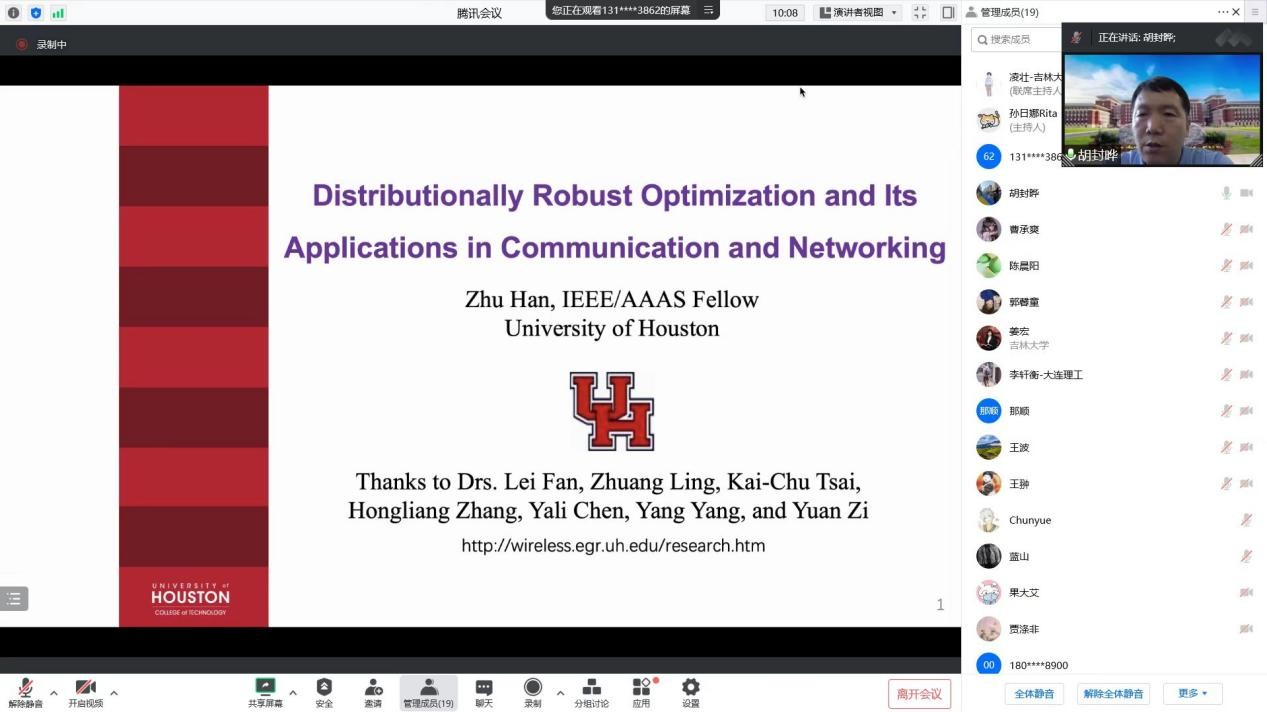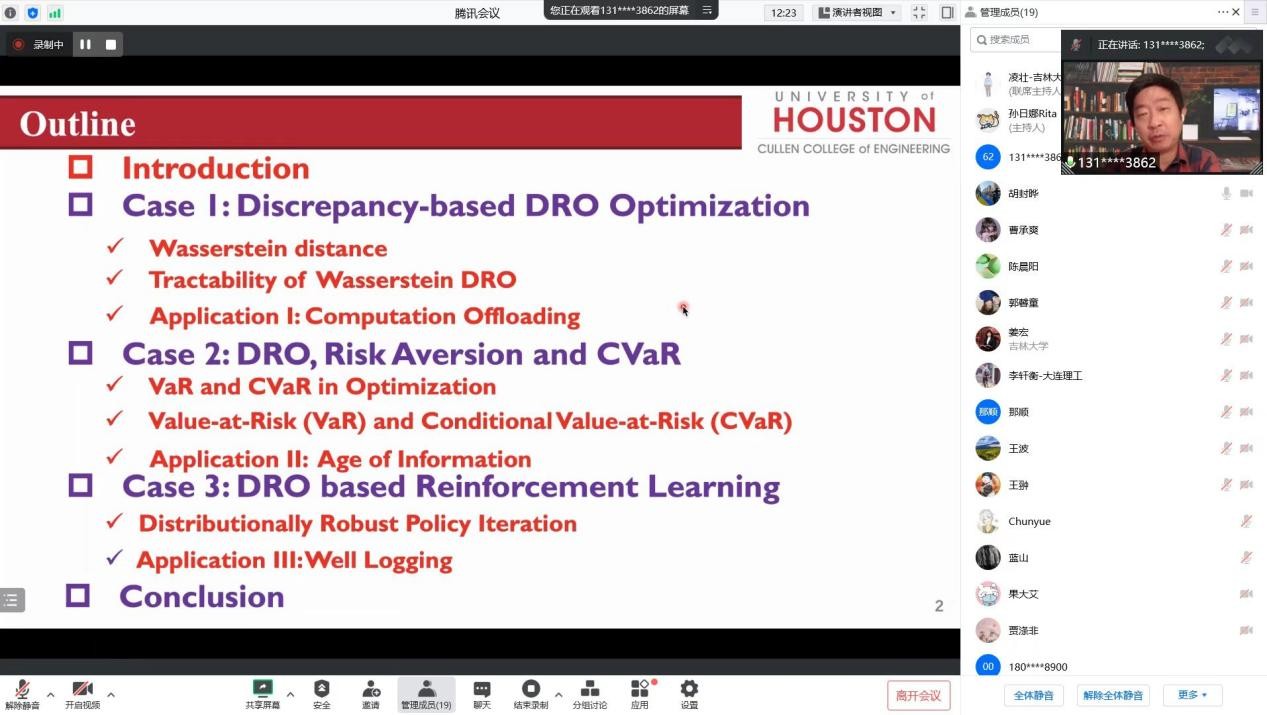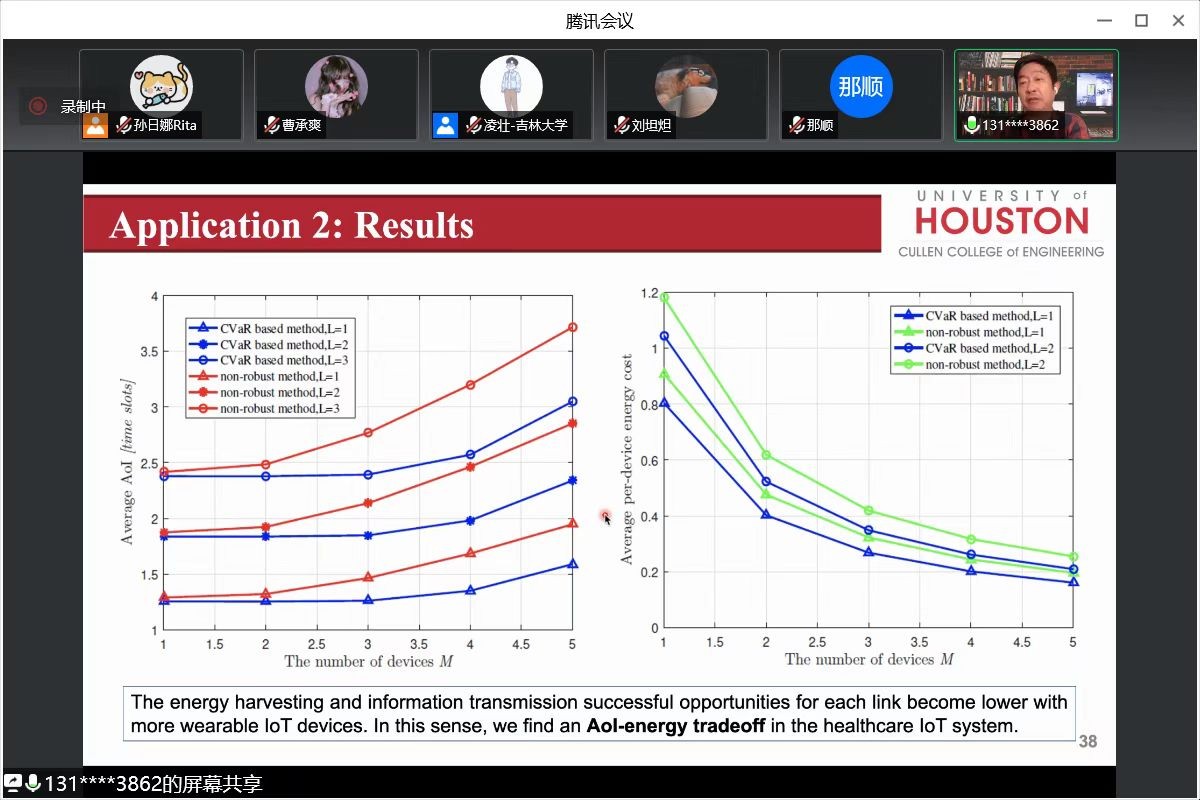2022年8月8日9:00,第四期信通与控制前沿技术系列讲座通过腾讯平台顺利召开。休斯敦大学zhu han教授受邀与通信工程学院师生开展题为“distributionally robust optimization and machine learning for communication networks”线上学术交流活动。交流会由胡封晔教授主持。

讲座伊始,胡封晔教授对zhu han教授的学术背景、工作履历、研究方向以及获得的荣誉奖项等作出了详细的介绍。
随后,han教授分享了本次讲座。他基于确定性概率分布和不确定概率分布两种方式入手,延伸介绍了三种常见的优化方式:随机规划鲁棒优化和分布式鲁棒优化。进而介绍了这三种优化方式具有的特征和相互的区别、联系,给出了它们分别适合应用的场景。总结了dro方式的作用和应用的优势所在。在此基础上,han老师分享了包括基于差异的 dro 优化、使用风险规避和cvar的dro方法以及基于强化学习的dro方法在内的三种dro的案例分析。最后,他阐述了使用dro方式的动机,并对dro优化方式、cvar、以及dro rl方式的基本内核进行了概况。
会后,学院师生都积极提出问题、参与讨论,han教授耐心的一一予以补充和解答。
本次讲座作为学院信通与控制前沿技术系列讲座的第四期,突破时间和空间的界限,为学院师生与国际一流高校专家学者提供开放交流的平台,为师生群体带来无线通信领域的前沿资讯和热点课题,也将进一步助推我院双一流学科建设工作。


zhu han简介
zhu han received the b.s. degree in electronic engineering from tsinghua university, in 1997, and the m.s. and ph.d. degrees in electrical engineering from the university of maryland, college park, in 1999 and 2003, respectively. from 2000 to 2002, he was an r&d engineer of jdsu, germantown, maryland. from 2003 to 2006, he was a research associate at the university of maryland. from 2006 to 2008, he was an assistant professor in boise state university, idaho. currently, he is a john and rebecca moores professor in electrical and computer engineering department as well as computer science department at university of houston, texas. his research interests include security, wireless resource allocation and management, wireless communication and networking, game theory, and wireless multimedia. dr. han is an nsf career award recipient of 2010. dr. han has several ieee conference best paper awards, and winner of 2011 ieee fred w. ellersick prize, 2015 eurasip best paper award for the journal on advances in signal processing and 2016 ieee leonard g. abraham prize in the field of communication systems (best paper award for ieee journal on selected areas on communications). dr. han is the winner 2021 ieee kiyo tomiyasu award. he has been an ieee fellow since 2014, aaas fellow since 2020 and ieee distinguished lecturer from 2015 to 2018. dr. han is a 1% highly cited researcher according to web of science since 2017.
